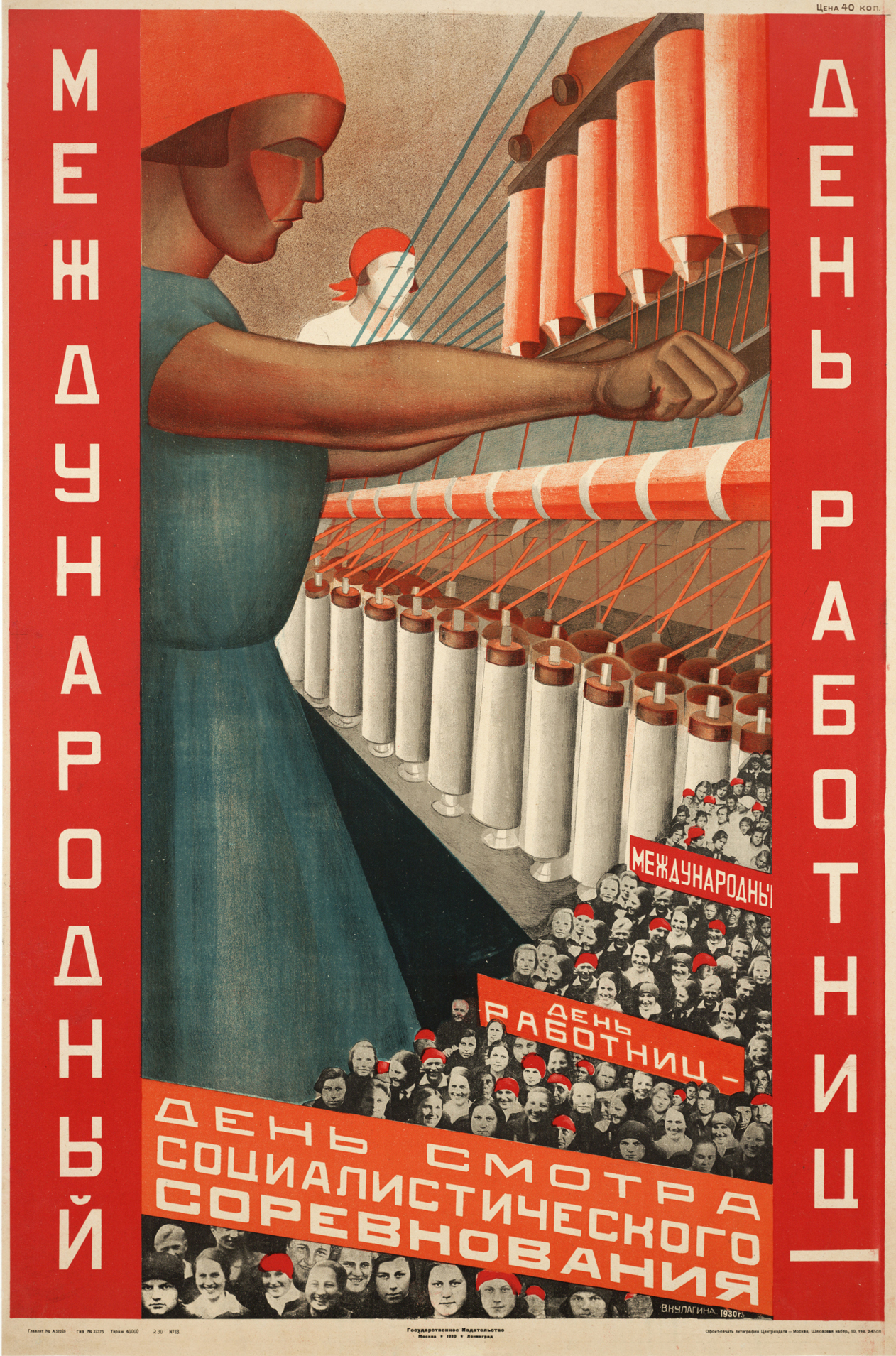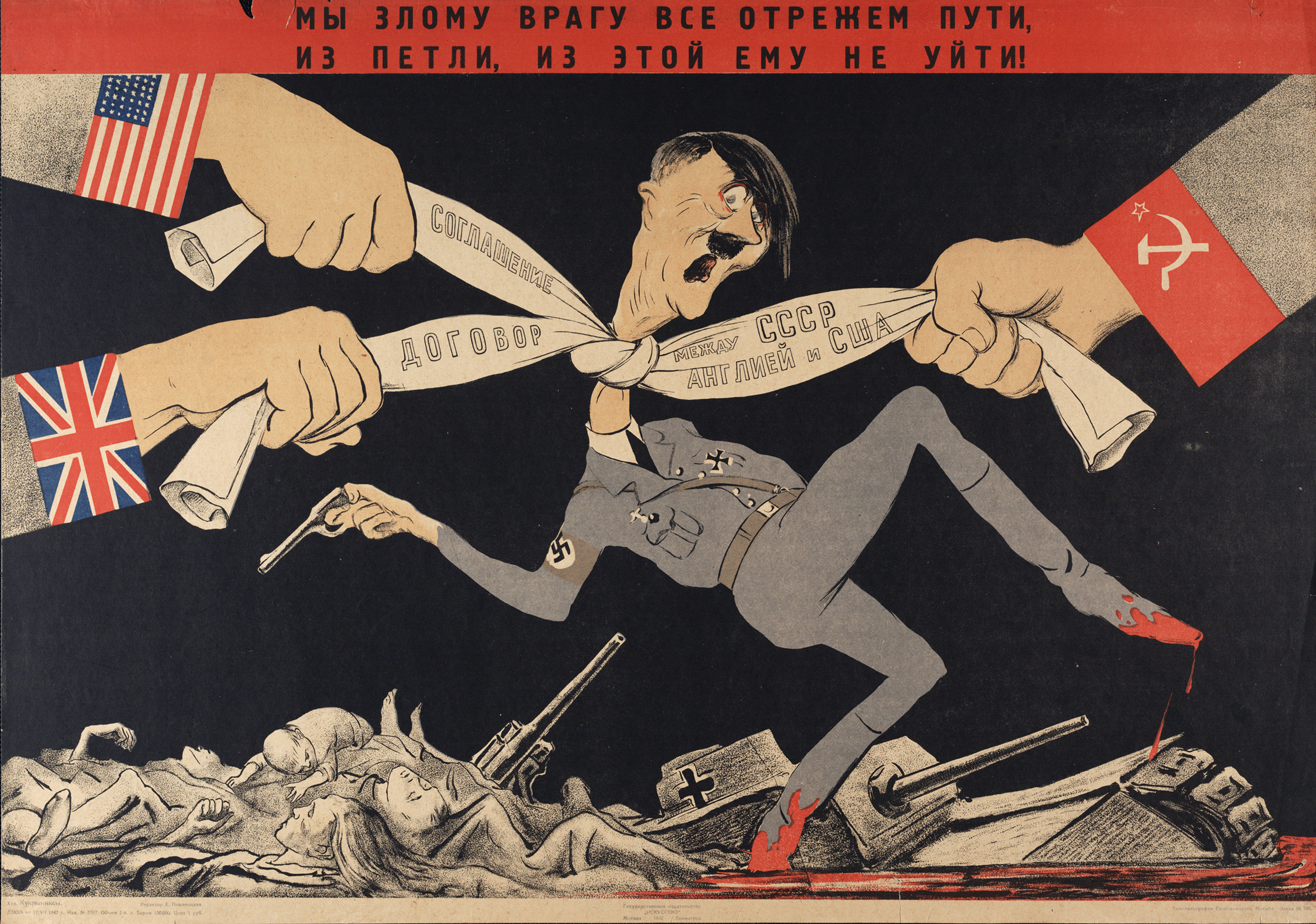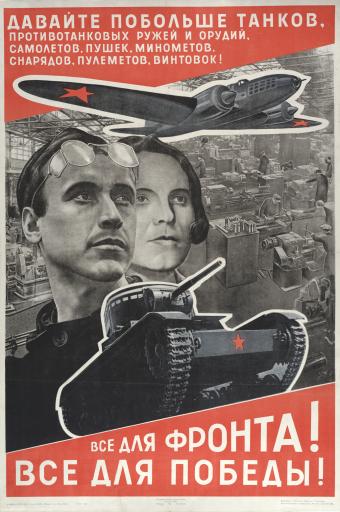The David Winton Bell Gallery and the Brown University Library will present Views and Re-Views: Soviet Political Posters and Cartoons, from Saturday, Sept. 6, to Sunday, Oct. 19, 2008. The exhibition will be on view at the Bell Gallery and the John Hay Library. An opening reception will be held at both venues on Friday, Sept. 5, 2008, from 5:30 to 7 p.m. Both exhibitions and the opening events are free and open to the public.
Views and Re-Views includes posters, cartoons, photomontages, and postcards spanning more than six decades, from the time of the Russian Civil War (1918–21) into the late Soviet period. The exhibition includes well-known Soviet graphic works, by such artists as Viktor Deni, Dmitri Moor, El Lissitsky, and Gustav Klutsis, as well as lesser-known, but equally compelling works by the Kukryniksy (a three-artist collaborative), Alexander Zhitomirsky, and others. Drawn from an extensive private collection of Soviet propaganda, the exhibition includes more than 160 images and was co-curated by Abbott (Tom) Gleason, Keeney Professor of History Emeritus, and Jo-Ann Conklin, director of the David Winton Bell Gallery.

Examining the theme of friends and enemies, the Bell Gallery exhibition includes both political cartoons and posters. The display at the John Hay Library focuses on the work of five artists or artist groups — Deni, Moor, Zhitomirsky, the Kukryniksy,and the creators of the ROSTA Windows — who produced some of the most compelling imagery of the Soviet period.
Seventeen years after the end of the Soviet Union, Views and Re-Views invites a post-Cold War assessment of Soviet graphic arts. “The exhibition suggests that artistic merit may be found in art in the service of political belief and subject to state regulation and that there is a range of stylistic diversity within work that is too often simply (and dismissively) characterized as Socialist Realism,” said Conklin. “Viewers may also note that with the passage of time it has become possible to see that not all criticisms of the West by Soviet artists are completely spurious or inauthentic.”
The dualism of friends and enemies, heroes and villains, is apparent throughout the exhibition, stemming both from old Russian culture and from 19th- and 20th-century Marxism. Enemies were both domestic — kulaks, priests, the leaders of the old regime, including the tsar — and foreign — the nations of the Entente (Britain, France and the United States) and the epic villains of capitalism. And, as Gleason explained, connections were manufactured between foreign and domestic enemies, ranging from the plausible (Russian capitalism was surely part of European capitalism) to the wildly implausible (Trotsky as a major figure in European fascism).
But, Gleason continued, “Enemies might suddenly emerge as friends under changing circumstances, as when we suddenly find the World War Two troika of Roosevelt, Churchill and Stalin against the Axis powers. The pantheon of heroes is even more obvious: Lenin and other Bolshevik leaders, the Red Army, emancipated women, poor peasants being proletarianized, Stakhanovite shock workers tripling productive norms for the sake of the community (and Comrade Stalin).” Views and Re-Views also shows that even heroes could fall: “Gregory Zinoviev was purged by Stalin, to say nothing of Trotsky, and is represented as a fascist lapdog on a Kukryniksy poster displayed in the exhibition.”
Two related programs are planned in conjunction with the exhibition. Gleason will deliver a lecture titled “Views and Re-Views: Looking Back at Bolshevik Political Art” on Wednesday, Oct. 8, 2008, at 7 p.m. in the List Art Center Auditorium. Additionally, the Cogut Center for the Humanities will present “Political Art and Its Paradoxes: A Symposium,” on Friday, Oct. 10, 2008, from 3 to 6:30 p.m. in the multipurpose room of Pembroke Hall, 172 Meeting St.
The exhibition and programs are sponsored by the David Winton Bell Gallery, Brown University Library, Cogut Center for the Humanities, and Office of the Vice President for International Affairs.

The David Winton Bell Gallery, located on the first floor of List Art Center, 64 College St., is open from 11 a.m. to 4 p.m. Monday through Friday and 1 to 4 p.m. Saturday and Sunday. For more information, call (401) 863-2932. Brown University’s John Hay Library, located at 20 Prospect St., is open 9 a.m. to 5 p.m. Monday through Friday.

